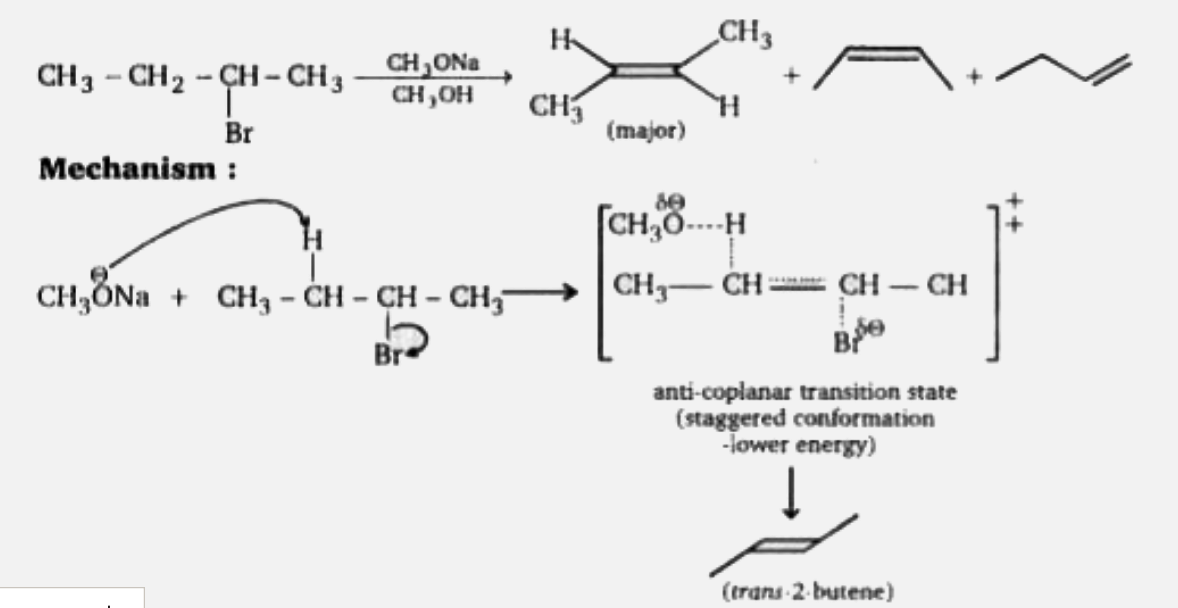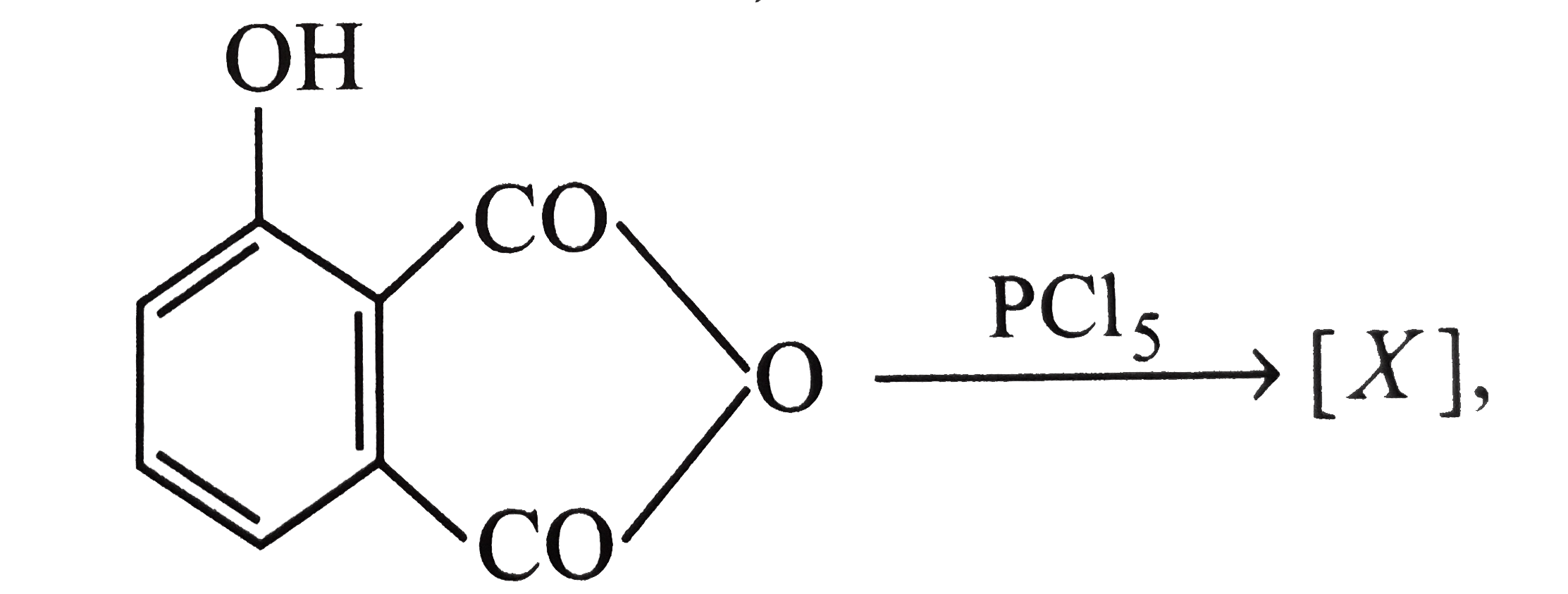 , Product (X) of this reaction is :Solution in Telugu
, Product (X) of this reaction is :Solution in Telugu




The correct Answer is:B
Nucleophilic addition.
Topper's Solved these Questions
- BOOK - MS CHOUHANCHAPTER - ALDEHYDES AND KETONESEXERCISE - LEVEL-220videos
ALDEHYDES AND KETONES
- BOOK - MS CHOUHANCHAPTER - ALCOHOL,ETHERS AND EPOXIDESEXERCISE - SUBJECTIVE PROBLEMS1videos
ALCOHOL,ETHERS AND EPOXIDES
- BOOK - MS CHOUHANCHAPTER - ALKYL HALIDES (ELIMINATION REACTION) EXERCISE - LEVEL-225videos
ALKYL HALIDES (ELIMINATION REACTION)
Similar Questions
Select the best choice for example (A to L) from the examples (a to n) given below. Write your choice in the box given.

 01:48View Solution
01:48View Solution
Maximum number of moles of Ac2O consumed by reactant (A) is :02:15View SolutionComprehension
E2 raction → Elimination bimolecular
In the general mechanism of the E2 reaction a strong base abstract a proton on a carbon atom adjacent to the one of the leaving group. As the abstracts a proton , a double bond forms and the leaving group leaves.

Identify the rate ofreaction of given compounds in E2 reaction:
 01:54View Solution
01:54View Solution
The major product (X) of the reaction is:01:43View SolutionIn the following reaction,

the product X is04:00View Solution
Product (X) of the reaction is:02:31View Solution
Product (X) of the reaction is:01:36View SolutionThe major product (X) of the reaction is:
 02:31View Solution
02:31View SolutionThe major product X of the reaction
 02:38View Solution
02:38View Solution, product (X) of reaction is:
02:12View SolutionThe major product X of the reaction
 00:54View Solution
00:54View SolutionIn the given reaction

The product 'X' is :05:50View SolutionIn the following reaction, the product 'X' is :
08:43View SolutionIn the given reaction,

the product [X] will be :02:51View Solution[X], product (X) in this reaction is
03:40View SolutionThe product x in the above reaction is
02:52View Solution

